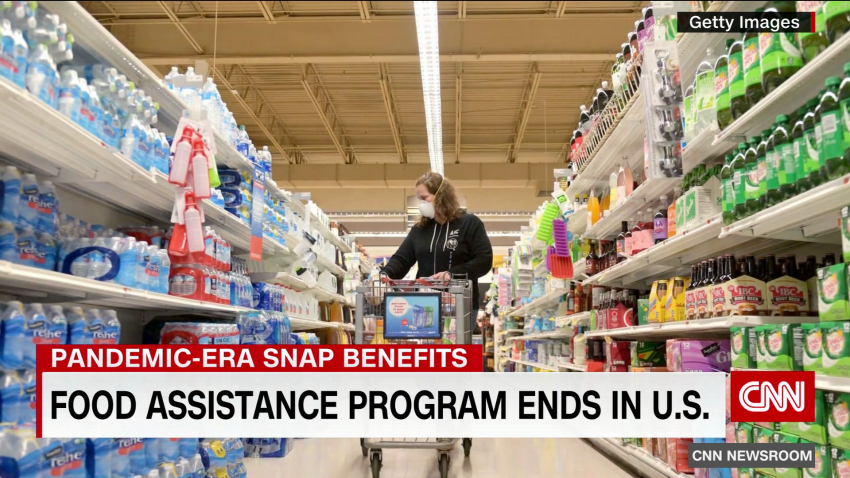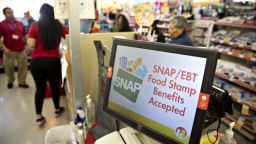Editor’s Note: Tom Vilsack is the US Secretary of the Department of Agriculture. The views expressed in this commentary are his own. View more opinion articles on CNN.
Our country was founded to support the prosperity and potential of Americans in every corner of the nation. Under President Joe Biden’s administration, we’re making good on this promise.

The price of gas is down, employment is up and we’ve seen record exports for American goods. But for those who rely on Supplemental Nutrition Assistance Program, or SNAP, federal benefits to help put food on the tables for their families, March will bring new challenges as temporary benefit increases brought on by the pandemic come to an end.
Among the many lessons learned during the past few years was just how vital SNAP is. During the health crisis, this bump in benefits – known as emergency allotments – was a lifeline for the over 41 million Americans receiving SNAP. It helped many Americans consistently feed themselves and their loved ones amid the strain of unemployment, illness and an uncertain future. As a result of this benefit increase and other pandemic assistance, hunger and hardship – though still profound – were not as widespread as they could have been.
The US Department of Agriculture (USDA) recognizes the value of SNAP to the American people. Not only for the program’s participants – parents, people with disabilities, our seniors and those meeting work and training requirements – but also to the broader economy. When participants use their SNAP benefits to buy food at their local businesses, those purchases also support the grocery store employees, truck drivers delivering foods and the farmers and producers who make the food.
In 18 states, governors have ended the SNAP emergency allotments. In March, the remainder will end under a provision in the Consolidated Appropriations Act, a large government funding package passed by Congress, that Biden signed into law late last year. As this happens, USDA is committed to doing everything we can to strengthen the underlying SNAP program and leverage all of our programs to increase food and nutrition security for American families.
We’ve already taken a big step to do just that by re-evaluating the Thrifty Food Plan – which forms the basis of SNAP benefits – to better reflect the cost of a practical, nutritious diet. This work resulted in the first permanent increase to the purchasing power of SNAP benefits since the Thrifty Food Plan was introduced 45 years ago, which means that SNAP benefits will stretch further and healthy food is more in reach. In October, USDA adjusted benefits to keep pace with rising food costs. These actions mean that even though benefits next month will be lower than they’ve been in recent years due to the expiration of emergency allotments, SNAP will still go further than it did at the start of the pandemic.
We’re also working to expand access to healthy school meals, connect more pregnant women, moms and young children to our Women, Infants and Children (WIC) program and deliver additional food-buying benefits over the summer to low-income families with children.
One of USDA’s top priorities in the National Strategy for Hunger, Nutrition, and Health, released as part of the historic White House Conference held last September, is advancing a pathway to free healthy school meals for all. And we know hunger doesn’t take a break when school is out for the summer. We are working with states again this summer to provide families with children extra benefits for groceries when their kids aren’t receiving meals from school, and we will be able to make that program permanent starting in the summer of 2024.
Thanks to the American Rescue Plan, USDA is also investing in modernizing the WIC program and expanding community outreach, so we can reach more eligible mothers and young children and improve the service they receive, setting them up for healthy outcomes. And as part of his agenda to build the economy from the bottom up and middle out, Biden has called on Congress to invest in child care, restore the full Child Tax Credit and cap the cost of insulin at $35 a month for everyone, building on the cap that we’ve added for seniors on Medicare.
These actions matter. They matter to the children who can focus on classroom outcomes instead of rumbling stomachs; they matter to the veterans and seniors who have given us so much service and joy; they matter to the person whose disability limits his or her ability to work; and they matter to the person looking for a job in this evolving economy. But they also matter to all of us whose communities are stronger when our neighbors have equitable access to sufficiently healthy food.
As we enter the next phase of our pandemic recovery, I’m reminded of what our country has always been: a place that serves the many and not the few. And in that spirit of compassion and strength that guides us all, let us continue to support the SNAP program that allows families to breathe a little freer, knowing that they live in a country that ensures their right to put nutritious foods on their tables.


